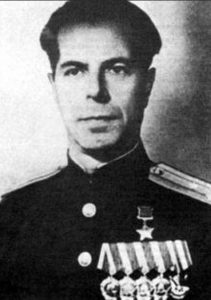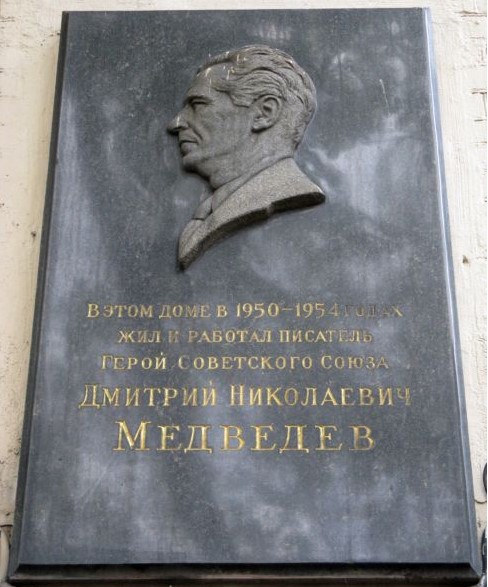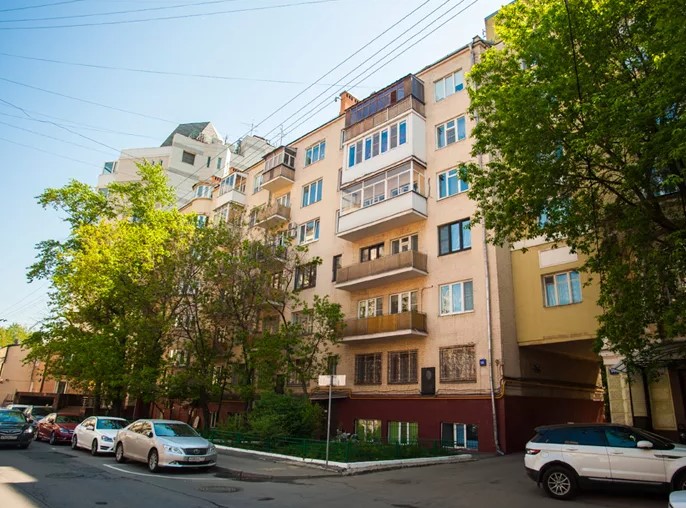Dmitry Nikolaevich
Medvedev
1898-1954

Dmitry Nikolaevich Medvedev was the commander of the guerrilla reconnaissance and sabotage detachment «Winners», which operated on the territory of the Rivne and Lviv regions of the occupied Ukrainian SSR, colonel. He was born on August 10 (22), 1898 in the town of Bezhitsa in the Bryansk district of the Oryol province (now in the Bryansk region) in the family of a steelworker. He graduated from the gymnasium, studied at the Odessa Institute of Public Education (Faculty of Physics and Mathematics), graduated from the Courses of the highest leadership of the NKVD of the USSR (1936). In 1917 he was secretary of the department of the Bryansk County Council. Since 1918 he had been in the Red Army: in the military intelligence of the 4th Oryol Rifle Division; participant in battles with the troops of A.V. Kolchak and N.N. Yudenich. Since May 1920 he had been in the organs of the Cheka-OGPU-NKVD-Ministry of Internal Affairs, since 1920 – in the territorial bodies of the Cheka-GPU, since the autumn of 1920 – Deputy head of the Special Department – member of the Board of the Bryansk Extraordinary Commission (CHEKA), since February 1921 in the Donetsk provincial Cheka, then chairman of the Starobilsk county Cheka, Shakhty county Cheka, head of the Special Department of the Donetsk Provincial Department of State Political Administration (GPU), since August 1922 in the Odessa provincial Department of the GPU (since June 1923, head of the department). He distinguished himself during the liquidation of large gangs in the Donbass in 1921-1922. From 1926 in Kharkov, then in Dnepropetrovsk, from 1928 in Kherson, from 1929 in Kupyansk, then in Berdichev, Stalino, Lubny. In 1932 he was the head of the Secret and Political Department of the Kiev regional Department of the OGPU. Since 1933 he had been the head of the Novograd-Volyn department of the GPU was the head of the Special Department of the 14th Cavalry Division, in 1935 the head of the Kirovograd department of the NKVD. Since 1936 he had been an inspector at the head of the NKVD in the Kharkiv region. In July 1937 he was expelled from the party and dismissed from the NKVD (according to an anonymous statement “for unjustified termination of criminal cases” and for communication with a repressed brother). After long and persistent demands to understand what happened in March 1938, he was reinstated in the state security agencies. Since April 1938 he had been Deputy Head of the 3rd (operational) Department of the White Sea-Baltic NKVD Combine in Medvezhegorsk, since 1939 in Norilskstroy. Intense work, which constantly required the mobilization of all physical and spiritual forces, shook his health. The bruise of the back that was once received began to affect, which turned into a serious spinal disease. Since November 3, 1939 he retired for health reasons. He lived in the Moscow region (Tomilino village), worked as a manager of the interdistrict office No. 3 of Mosgortop. Since June 1941 he had been in a separate motorized rifle division of special purpose, he was twice withdrawn to the enemy’s rear. From September 7, 1941 to January 12, 1942, he was the commander of the Mitya sabotage detachment operating in the Smolensk, Orel and Mogilev regions. During his stay in the enemy’s rear, the group of D.N. Medvedev managed to organize, strengthen and intensify the work of armed groups in a number of districts of the Orel and Bryansk regions and the Mogilev region of Belarus, to create partisan detachments here. In the Bryansk forests, the foundation was laid for the deployment of the so-called partisan region with centers in the cities of Zhizdra and Dyatkovo. Of the 27 partisan detachments operating in this region 7 were created with the active help of the Medvedevites. The detachment under his command conducted over 50 combat operations, destroyed 17 officers and up to 400 enemy soldiers, blew up 3 echelons, destroyed 9 planes, 7 highway and 3 railway bridges at airfields with the participation of underground workers. In the battles, Dmitry Medvedev was wounded twice and concussed. Since January 1942 he had been in the central office of the NKVD of the USSR. In June 1942 – March 1944 he was the commander of the special forces unit “Winners”. In June 1942 a group of partisans led by D.N. Medvedev landed in the Zhytomyr region – 300 km from the locations of the detachment on the territory of the Rivne region. Under the leadership of D.N. Medvedev a special group of scouts was created, which included Aleksander Lukin and Vladimir Frolov. While in the Sarna forests, the “Winners” detachment, on the initiative of its commander, created a family camp in which 160 Jewish women, children and the elderly escaped from the ghetto. The connection of D.N. Medvedev and his intelligence chief “Patria” – the heroic Spaniard Maria de las Eras Africa (Maria Fortus) with the outstanding intelligence officer N.I. Kuznetsov made it possible to discover Hitler’s “Werewolf” (“Werewolf”). The Hitlerite command tried to block D.N. Medvedev’s detachment. The punitive operation was led by SS Standartenfuhrer Piper. The fight lasted more than seven hours. On the enemy side there was a fourfold superiority of more than two and a half thousand soldiers and officers. But with the skillful leadership of D.N. Medvedev, he achieved victory. The SS Piper was killed, the punishers were defeated, the detachment captured rich trophies – 120 carts with weapons, many machine guns. Acting from June 1942 to March 1944 on the territory of the Rivne and Lviv regions of Ukraine, the detachment of D.N. Medvedev conducted 120 major battles, in which 1,350 Hitlerite soldiers, 780 policemen and over 1,000 Bandera members, including 11 generals and top government officials of Hitlerite Germany, were eliminated. 52 echelons with manpower and equipment were blown up. Several bridges and businesses were destroyed. 4 guns, 6 mortars, up to 60 machine guns, a large number of small arms were captured in the battles. During the period of its activity, the “Winners” detachment grew to 1,000 fighters and created 10 new guerrilla detachments. When the Soviet Army began to liberate Ukraine, Dmitry Medvedev decided to go in the direction of Lviv and provide assistance to the advancing troops. And in early February, he received an order to withdraw the detachment to the rear of the Red Army and crossed the front line on February 5. Thus, the path of the reconnaissance and sabotage detachment “Winners” ended. During the combat work, this detachment carried out. The old injury was making itself felt, and D.N. Medvedev made his way to his own already lying in a cart. Upon his return, he reported: “The operational group “Winners” carried out a huge intelligence work on a daily basis, all the data it obtained were reported to the command by radio. By May 1943, the reconnaissance work covered Rivne, Zdolbunov, Lutsk, Kovel, Sarny, Rakitnoye, Kostopol, Ludvipol, Bereznoye and many others. Since October 1943, the intelligence of the task force also covered Vinnitsa, and in January 1944 – Lviv.” By decree of the Presidium of the Supreme Soviet of the USSR dated November 5, 1944, Colonel Dmitry Nikolaevich Medvedev was awarded the title of Hero of the Soviet Union with the award of the Order of Lenin and the Gold Star medal for exemplary performance of command tasks behind enemy lines. Since March 1944, he worked as deputy head of the counterintelligence department in the central office of the Ministry of State Security of the USSR, was on a special business trip to Lithuania. Since December 1946, Colonel D.N. Medvedev had been retired. After the war, after retiring, the legendary partisan commander became famous as a writer and storyteller, whose radio broadcasts were eagerly awaited by the whole country. The books of Hero of the Soviet Union D.N. Medvedev “It was near Rivne” (1948; revised and expanded edition entitled “Strong in Spirit”, 1951; the play of the same name together with A. Grebnev, 1949) and “The Detachment goes to the West” (1948) were included in the golden fund of literature about the Great Patriotic War. In the center of these works is the image of a real person – Hero of the Soviet Union N.I. Kuznetsov. The story “On the banks of the Southern Bug”, published in 1957, about the heroic deeds of the Vinnytsia underground during the war, prevented the death of the patriot writer from being completed. Dmitry Medvedev’s fascinatingly written books are widely popular both in our country and abroad, they have been translated into many foreign languages.
Address: Moscow, Staropimenovsky lane, 16

